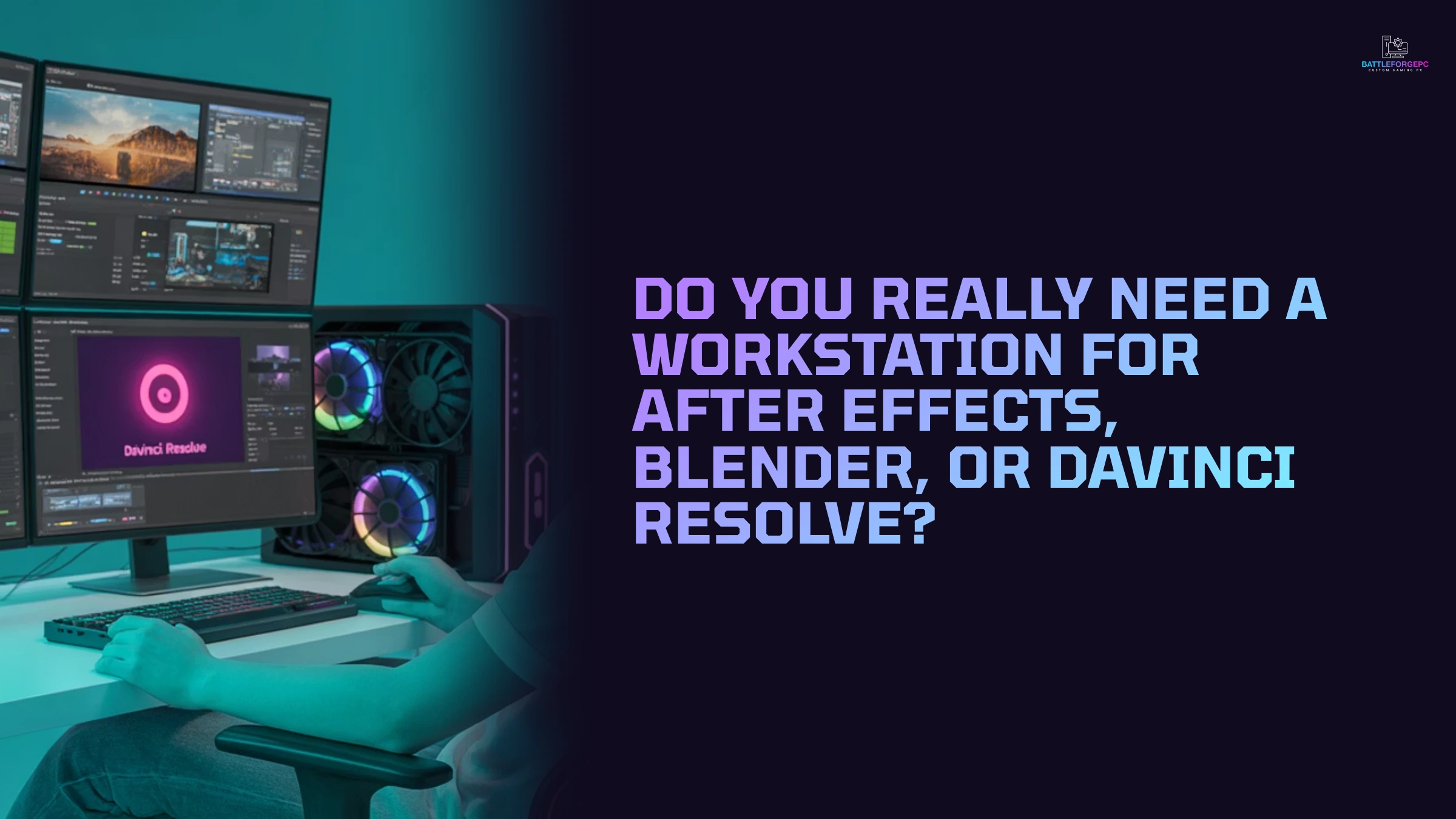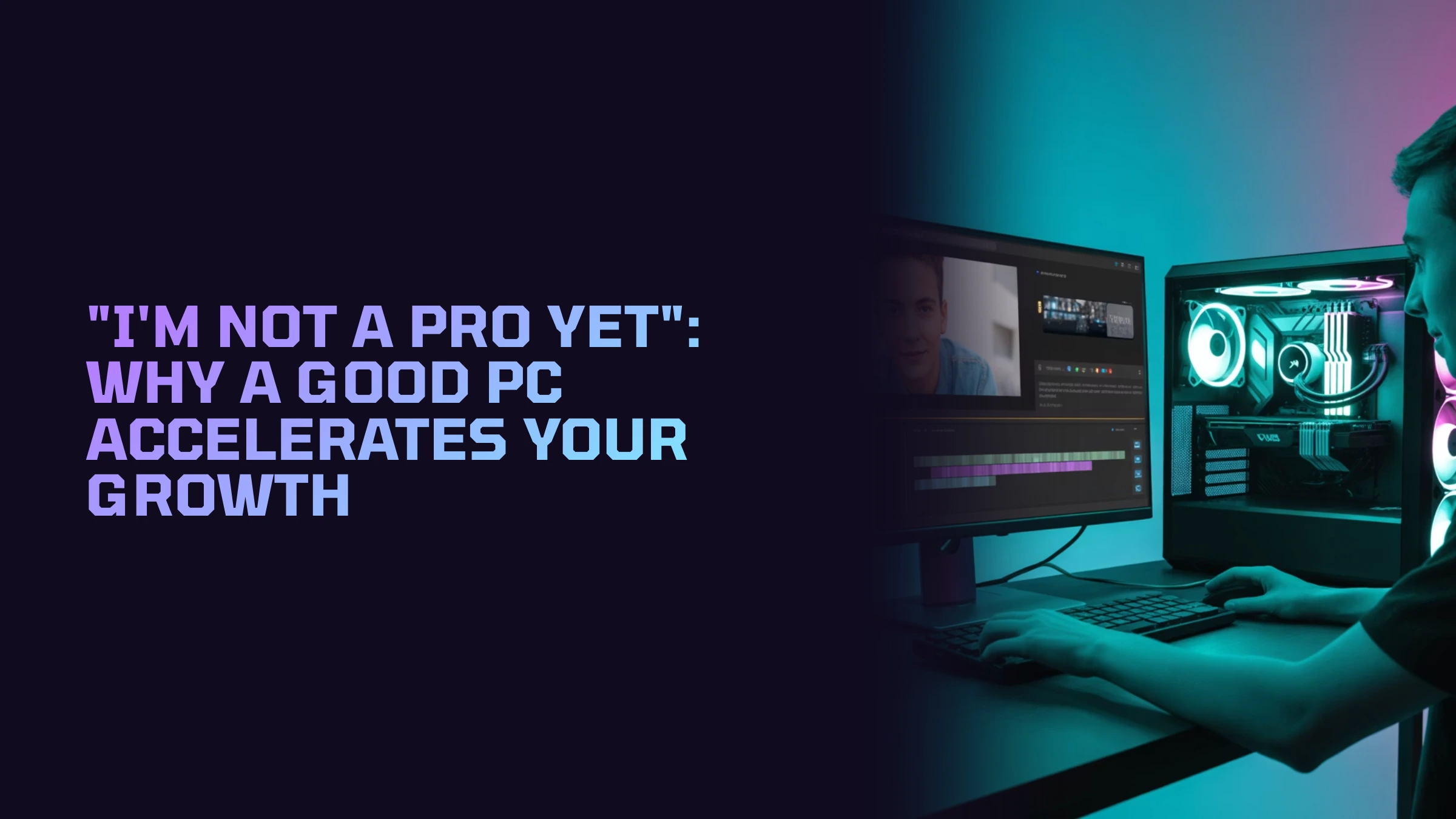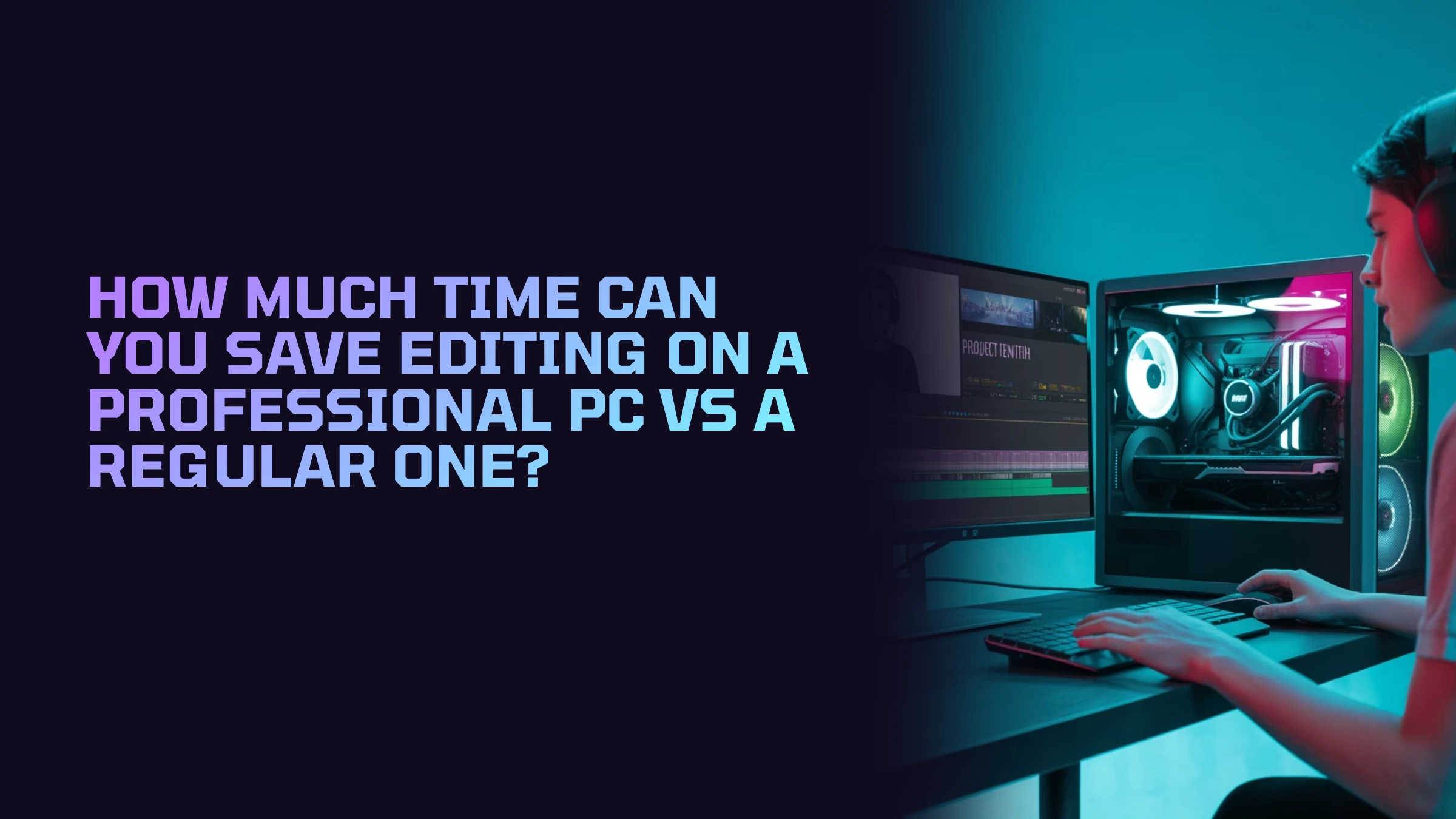Do You Really Need a Workstation for After Effects, Blender, or DaVinci Resolve?

Do You Really Need a Workstation for After Effects, Blender, or DaVinci Resolve?
That $8,000 workstation looks impressive, but will it actually make your After Effects renders 3x faster?
The answer depends on your specific projects and workflow - not marketing hype.
🎨 After Effects: CPU vs GPU Reality
What Actually Needs Workstation Power
Workstation justified for:
• Complex 3D compositing with Cinema 4D integration
• Heavy particle systems (Trapcode, Red Giant)
• Long-form projects (60+ minute timelines)
• Multiple 4K+ layers with effects
• Professional color workflows requiring precision
Gaming PC Can Handle
Standard motion graphics work:
• Text animations and logo reveals
• 2D compositing with moderate effects
• Social media content (Instagram, TikTok)
• Basic green screen and color correction
• Short-form projects (under 5 minutes)
🖥️ Blender: The GPU Game Changer
Cycles Rendering Evolution
GPU rendering dominance:
• RTX 4090 often outperforms expensive CPU workstations
• OptiX acceleration for NVIDIA cards
• VRAM matters more than CPU cores for final renders
• Multi-GPU scaling available on gaming motherboards
When Workstations Make Sense
Professional 3D studios need:
• Massive scene files (millions of polygons)
• Complex simulations (fluid, cloth, smoke)
• Network rendering across multiple machines
• ECC memory for critical project stability
• ISV certification for client requirements
🎬 DaVinci Resolve: The Memory Monster
RAM Requirements Reality
Resolve loves memory:
• 32GB minimum for 4K timeline work
• 64GB sweet spot for color grading
• 128GB+ for 8K or complex node trees
• Gaming PCs can achieve this at lower cost
GPU Acceleration Advantages
CUDA/OpenCL performance:
• Real-time color grading with consumer GPUs
• Noise reduction benefits from VRAM
• Timeline performance scales with GPU power
• RTX 4080 often faster than workstation cards
💰 Cost-Benefit Analysis
High-End Gaming PC ($3,500)
Specs: i7-13700K, RTX 4080, 64GB RAM
Handles 90% of creative work including:
• 4K video editing and color grading
• Complex After Effects projects
• Professional Blender rendering
• Bonus: Great for gaming downtime
Entry Workstation ($8,000)
Specs: Xeon W-3400, RTX A4000, 128GB ECC RAM
Advantages:
• ECC memory for zero-error rendering
• Professional drivers and support
• ISV certification for enterprise
• Better for mission-critical work
🎯 Decision Framework by Use Case
Freelancer/Small Studio
Gaming PC recommended:
• Better price-to-performance ratio
• Easier to upgrade components
• Handles client work professionally
• More budget for software/plugins
Large Agency/Studio
Workstation considerations:
• Client perception and professional image
• IT support and warranty requirements
• Network rendering infrastructure
• Tax advantages for business equipment
🔍 Software-Specific Recommendations
After Effects Priority
Focus budget on:
• Fast single-core CPU (i7/i9 or Ryzen 7/9)
• 32GB+ RAM for complex compositions
• Fast NVMe storage for cache files
• Mid-range GPU (RTX 4060 Ti sufficient)
Blender Priority
Invest in:
• High-end GPU (RTX 4080/4090)
• Balanced CPU for viewport performance
• 32GB RAM for complex scenes
• Consider dual-GPU for render farms
DaVinci Resolve Priority
Emphasize:
• 64GB+ RAM for smooth timeline
• Powerful GPU for real-time effects
• Fast storage for 4K+ footage
• Multi-core CPU for export performance
⚠️ When Workstations Are Actually Needed
True workstation requirements:
• Mission-critical projects requiring zero downtime
• Client-mandated certifications (ISV, professional drivers)
• Complex network rendering environments
• 8K+ workflows with extreme complexity
• Scientific/medical visualization accuracy needs
🚀 Smart Upgrade Path
Start with high-end gaming PC:
• Prove your workflow demands with real projects
• Identify actual bottlenecks vs. perceived needs
• Upgrade to workstation later if justified
• Save thousands on unnecessary features
✨ Bottom Line
Most creative professionals don't need true workstations. A well-configured gaming PC handles After Effects, Blender, and DaVinci Resolve professionally while costing 40-60% less.
Save the workstation investment for when your projects and client requirements actually demand those specific features.
🎯 Ready to Build Smart?
👉 Unsure if you need workstation power?
Get a workflow analysis to determine your actual hardware requirements. 🖥️⚡
Comments
Please log in to comment

![Cover image for Lunar Lake vs Arrow Lake: Shocking Differences Revealed in Intel's Next-Gen CPUs [2025 Guide]](https://xyhebqsgccwvmigqkwam.supabase.co/storage/v1/object/public/article_images/covers/c2b550d8-3c68-444a-b9c7-82d05fb89846.jpg)
